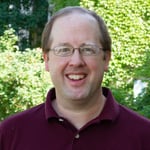Leveraging Digital Marketing for Manufacturers: 3 Real-World Success Stories
Written by
It’s no secret that industrial buyers conduct extensive independent research before considering a product or service. The B2B buyer’s journey has shifted dramatically toward self-service — 75% of B2B buyers prefer a rep-free sales experience, and 64% prefer a 100% digital buying experience for familiar products or services.
Manufacturers today face growing pressure to stay competitive, grow revenue, and generate qualified leads. Digital marketing has become the key to meeting these demands, providing data-driven strategies to maximize reach and ROI.
True success requires a holistic digital marketing strategy — one that embodies the inbound philosophy of helping your buyer by providing value and building trust, rather than interrupting their journey.
B2B buyers’ reliance on online resources also highlights the need for strategies that integrate tools such as:
- Paid media and online advertising (search, display, social, etc.)
- Targeted web pages
- Clear calls to action (CTAs)
- Email marketing campaigns
- Helpful content tailored to your target personas’ challenges
- Professional social media communities
With the organic search landscape shifting dramatically due to the rise of AI search, paid advertising is a more important component of an effective digital marketing strategy — yet it’s still only one piece of the puzzle.
With more B2B buyers categorizing their purchases as complex or difficult, manufacturers need more than standalone tactics. By embedding paid advertising into a broader strategy focused on education and engagement, manufacturers can create marketing programs that not only deliver immediate results but also foster long-term growth.
At Weidert Group, we’ve helped manufacturers develop and execute comprehensive digital strategies that deliver measurable results. Here are three recent success stories that showcase the power of digital advertising when done in the right context.
Case Study 1: Autonomous Mobile Robot Manufacturer
A Multi-Channel Approach to Drive Revenue and Engagement
Key Metrics
- Revenue Influenced by Ads: $457,482
- Ad Channels: Google, LinkedIn, Facebook, Instagram, Microsoft/Bing, Reddit
- Total Ad Leads: 2,296
- Opportunities Generated: 167
This manufacturer utilized a robust multi-platform advertising strategy to target their ideal audience across six key channels. Their campaigns produced an impressive $457,482 in influenced revenue and generated 2,296 ad leads, with a cost per lead of $144.51.
Beyond lead generation, the ads built strong brand engagement, particularly on LinkedIn and Meta (Facebook/Instagram). LinkedIn campaigns achieved nearly 2,000 reactions and over 3,300 clicks to their profile, while Facebook and Instagram drove more than 8,100 interactions.
This holistic strategy not only filled the pipeline but also boosted brand awareness, reinforcing the value of digital marketing as a revenue-generating powerhouse.
Case Study 2: Audio Communications Solutions Provider
Record-Setting ROI with Precision Targeting
Key Metrics
- Return on Ad Spend (ROAS): 204%
- Confirmed Sales Influenced: 57
- Revenue Influenced by Ads: $234,953
- Total Ad Leads: 559
- Opportunities & SQLs: 206 opportunities / 59 SQLs
- Ad Channels: Google, Microsoft/Bing
The targeted digital campaigns for this service and solutions provider of industrial audio communications were a masterclass in ROI optimization. By focusing on high-intent platforms like Google and Microsoft/Bing, they achieved an impressive 204% return on ad spend (ROAS). Their efforts influenced $234,953 in revenue, generated 559 leads, and created 206 new opportunities, including 59 sales-qualified leads (SQLs).
This success illustrates how precision targeting and optimized ad spend can yield outsized returns, helping industrial solutions providers connect with motivated buyers and drive substantial pipeline growth.
Case Study 3: Financial Services Consulting Firm
Building Awareness and Engagement on LinkedIn
Key Metrics
- Total Ad Leads: 439
- Cost Per Lead: $142.14
- Opportunities from Ads: 71
- Social Engagement:
- LinkedIn: 788 reactions, 47 follows, 1,111 page clicks
For this provider of B2B financial services, digital ad campaigns centered on building awareness and engagement with their niche audience. While direct revenue metrics weren’t tracked, the campaign achieved 439 leads and 71 new opportunities, demonstrating the potential of their pipeline.
This case underscores the importance of social media engagement as a strategic lever for brand awareness: LinkedIn played a crucial role in the campaign’s success. With nearly 800 reactions and over 1,100 clicks to their page, they strengthened their brand presence while connecting with key decision-makers.
Why Digital Marketing Works for Manufacturers
These case studies highlight why a holistic approach to digital marketing is essential for manufacturers and other industrial companies:
- Targeted Reach: Multi-channel strategies allow manufacturers to meet prospects where they are.
- Measurable Impact: From lead generation to revenue influence, campaigns can deliver quantifiable results.
- Enhanced Engagement: Social media platforms amplify brand visibility and create meaningful connections.
Paid advertising plays an important role in these successes, but it thrives when embedded in a broader strategy rooted in inbound principles: By prioritizing value, education, and trust, manufacturers can create cohesive marketing programs that resonate with buyers at every stage of their journey.
Discover more insights into the trends shaping industrial marketing by accessing our State of Industrial Sales & Marketing Report — your guide to staying competitive in an evolving digital landscape.
Subscribe To Our Blog
Information. Insights. Ideas. Get notified every time a new Weidert Group blog article is published – subscribe now!
You May Also Like...

Search Engine Optimization
Optimize Your Industrial Website for AI Search

Marketing Technology
Why Unified Data Efforts Fail (and How Manufacturers Can Fix It)

Search Engine Optimization
How Falcon Rebuilt Industrial AI Search Visibility in 2025
Accelerate Your Growth with
Weidert Group
If you’re ready to explore a partnership, request a personalized consultation with our team.

